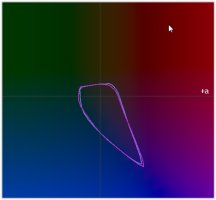- Joined
- Dec 27, 2014
- Messages
- 6,178
- Reaction score
- 7,365
- Points
- 373
- Location
- Germany
- Printer Model
- L805, WF2010, ET8550, T3100X
Zip compression is lossless, could it be that you did a resize/reformat of the images ? Interpolated colors appear along the edges of all patch fields - that is typically uncritial since you are not measuring there, when I crop just to the inside of a patch field the color value is the same for all pixels - that's fine. I have seen it differently already in the past.



